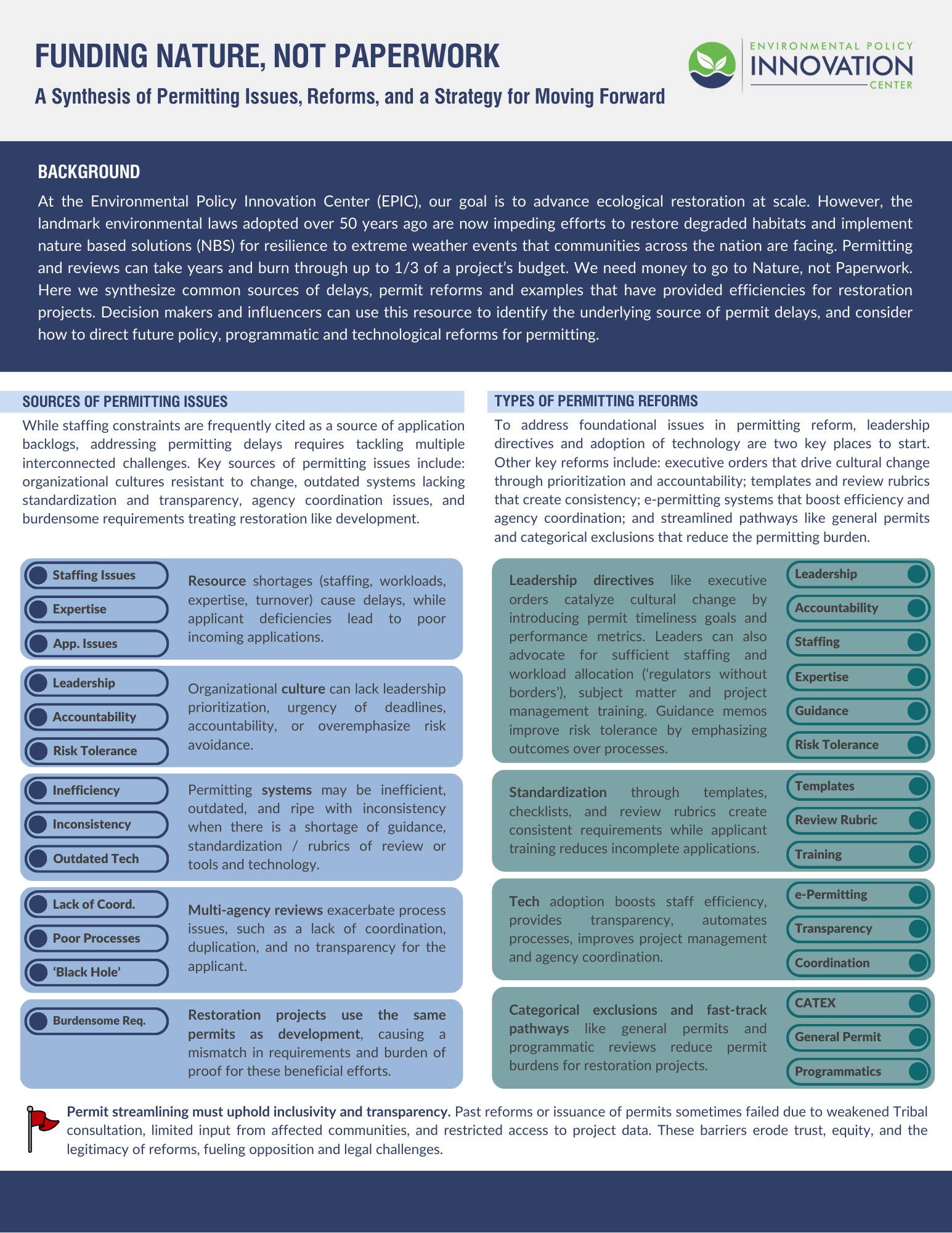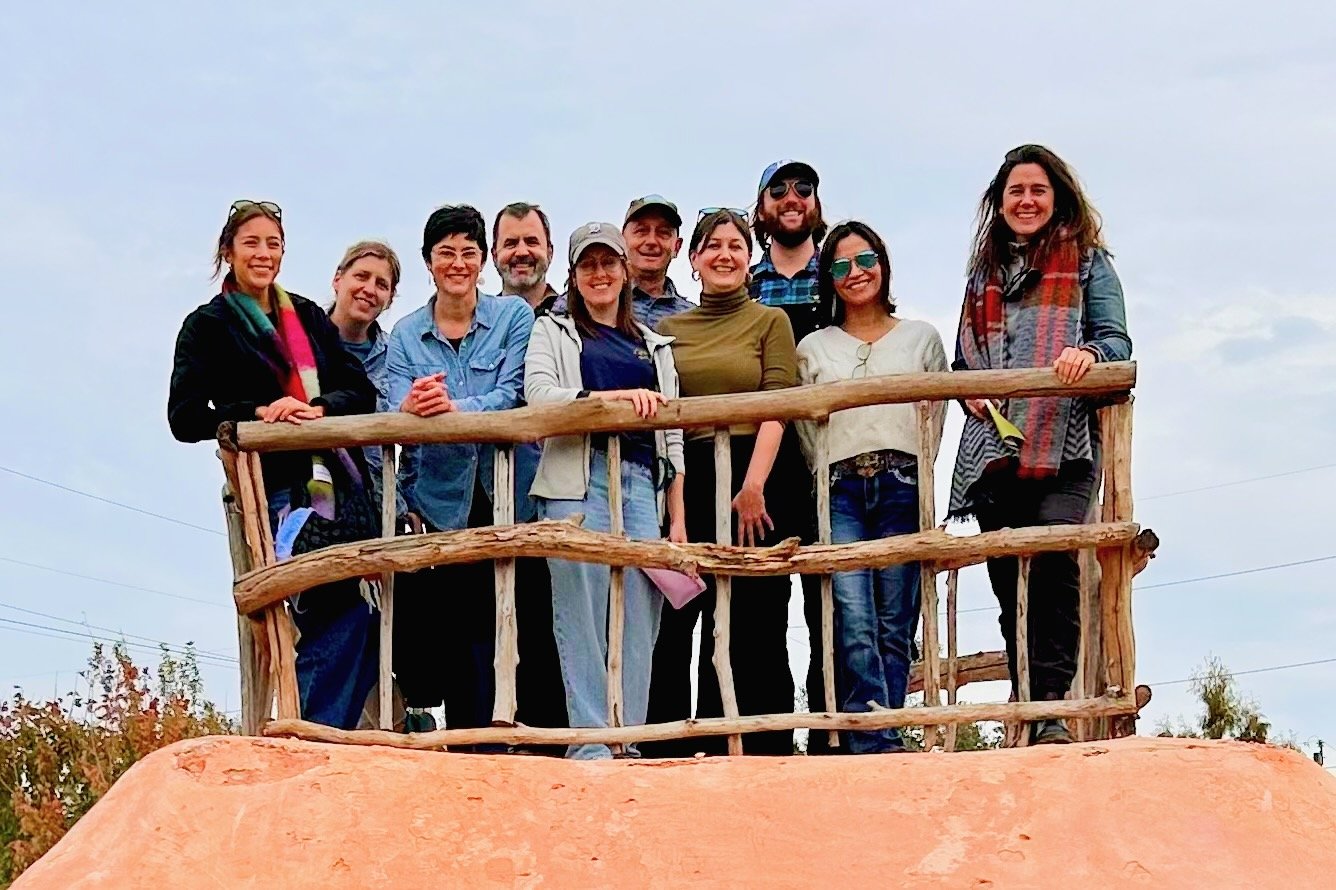Discover More

¿Se puede cambiar un palo borracho por lapacho? Una mirada al mercado emergente de servicios ambientales de Paraguay

Funding Nature Not Paperwork 2.0: A Synthesis of Permitting Issues, Reforms, and a Strategy for Moving Forward

Can tropical forest loss be offset by a forest “credit”? A closer look at an emerging environmental market in Paraguay

Data-Driven Trust: what we can and cannot see in water data
Imagine turning on your tap and wondering if the water is safe to drink. You're not alone—studies show erosion of trust in drinking water is a global concern. A recent study found that more than half of adults worldwide expect to be seriously harmed by their drinking water within the next two years.

A New Era For Water Management: Harnessing GIS Innovations and Collaboration for a Resilient Future

10 Fundamentals for Smart Permitting
The Trump-Vance Administration is excited about permitting reform, so are we! And, to get there, we want to see smart permitting. Efficient and effective permitting should be about getting to “yes” or “no” on projects faster—and we know there are hundreds of ways to do that without minimizing scientific rigor, transparency, and public participation. We’ve researched dozens of federal and state policies and technologies that have sped up permitting. Here we synthesize our 10 fundamental recommendations for improving the environmental review and permitting process.

EPIC visits Urban Greenway Project in New Orleans
EPIC’s Restoration Economy Center recently held its annual team retreat in New Orleans, Louisiana. While the trip included team building and bonding activities (complimented with NOLA classics like beignets and coffee with chicory from Cafe du Monde of course!), the highlight of the week was a fantastic tour of the Lafitte Greenway.

Clean Water and Drinking Water SRF Financial Terms, Conditions, Definitions, and Other Application Information

Mapping at the Intersection: Environmental Justice & Conservation
Earlier this year, Gabe Watson and EmmaLi Tsai participated in a workshop hosted by Defenders of Wildlife to help researchers create better maps at the intersection of environmental justice and conservation. Decisions from the workshop resulted in this user guide & website, which walks users through a more collaborate and inclusive approach to conservation that considers biodiversity, climate change, and environmental justice. To put the framework and shared principles into practice, the guide also features a case study using the National Wildlife Refuge System to show where future land acquisition should be prioritized.

CWSRF Sponsorship Programs: Swipe Right to Match Point Source Projects with Nonpoint Source Projects
Since the passage of the Bipartisan Infrastructure Law (BIL), there has been an interest from many quarters to direct a larger portion of these funds towards green stormwater infrastructure (GSI) projects. While the Clean Water State Revolving Fund (CWSRF) has funded some GSI and other nonpoint source projects over the years, it remains a very small percentage of overall spending.

VA’s PEEP is a Gold Star Example of Permit Efficiency

Optimizing for Outcomes: Digital Services are the Perfect Environmental Partners
Despite their commitment, many agencies face outdated tools and limited resources, hindering progress. Discover how Digital Service teams, with their collaborative, flexible approach, can provide the expertise necessary to modernize and accelerate environmental initiatives.

Reimagining Permitting Processes: A Case Study of Virginia’s Permitting Enhancement and Evaluation Platform
At the Environmental Policy Innovation Center (EPIC), our goal is to advance ecological restoration at scale, yet permitting costs consume up to ⅓ of project budgets. We need money to go to nature, not paperwork. Over the past two years, EPIC has quantitatively and qualitatively analyzed policies and processes related to restoration project permitting. Here we provide a case study of adoption of e-permitting technology that ameliorated many permitting bottlenecks.

Ecosystem Marketplace: How We Harness an Infrastructure Boom to Close the Biodiversity Finance Gap
Tim Male, Executive Director of EPIC, co-wrote an article in Ecosystem Marketplace with Mariana Sarmiento and Charles Bedford on how to close the biodiversity finance gap.

Joint Public Comment: The National Environmental Policy Act: Relevance to Open Government and Public Participation

5 Key Areas Technology Should and Should Not Be Used in Permitting
Technology has the potential to speed up environmental permitting by enhancing transparency, data management, and public engagement. To truly streamline the permitting process, it’s essential to combine digital solutions with policy and process improvements.

The Regional Conservation Partnership Program (RCPP) and the next Farm Bill

Fun Tidbits I Learned While Researching US Biodiversity Markets

Zero-Percent Interest Loans Make Lead Pipe Replacement Affordable in Many States


